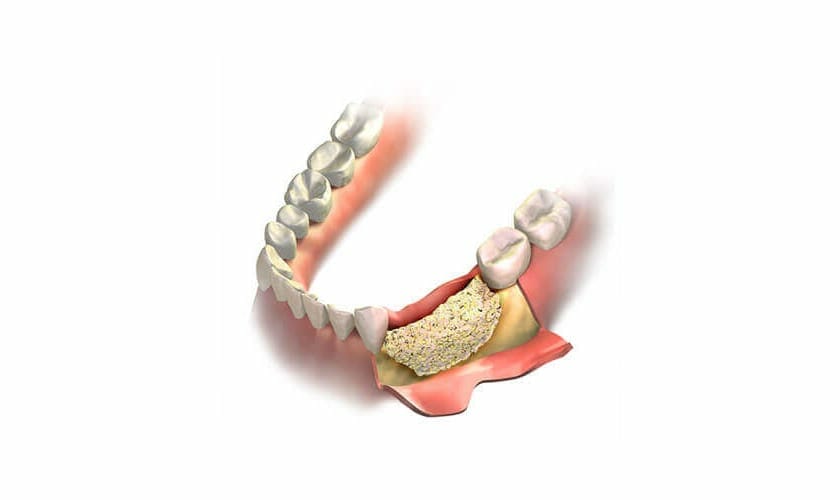
When you require replacing a missing or extracted tooth, a dental implant can change and improve your smile. These amazing restorations appear and perform like a natural tooth, but they also need a sufficient amount of jawbone for successful implantation. A Dental Bone Graft is a surgical process that replaces missing bone in your jaw with bone grafting material to promote regeneration. As the original bone develops, it absorbs the graft material, leading to a fully fused area of new bone. This is a regular dental routine that is both pain-free and predictable.
What are its Types?
Given below are common types of bone grafting material:
- Autografts- Taking bone tissue from the patient’s own body. The surgeon generally takes this tissue from the patient’s chin, shin, or hip.
- Allografts- In this case, the bone comes from a human donor which is lab-processed, that has undergone treatments to make it neutral to immune reactions and free of host diseases.
- Xenografts- This bone grafting material comes from the inorganic parts of animal bones, especially cows.
- Alloplasts- This kind of graft is made from hydroxyapatite, a naturally occurring mineral in bone.
- Ceramic-based grafts- These are created from ceramics alone or in fusion with another material like calcium or bioactive glass.
Who is a candidate for Bone Graft?
Individuals who have undergone bone loss and lack healthy bones due to aging, missing teeth, genetic or developmental defects, untreated periodontal issues, or trauma to the jaw require bone grafting. If you require a tooth extraction or considering a dental implant, your specialist might prescribe bone grafting.
How will your Dentist Treat you in Cincinnati, OH?
At MK Dental Excellence you will meet your specialist Dr. Manju R. Kejriwal to discuss the treatment procedure and decide the bone grafting material to be used. Your bone grafting process will be based on the purpose of treatment, but you can basically expect the following steps:
- Anesthesia. Your specialist will use a local anesthetic to numb the surgical area. You also might require IV sedation if they take the tissue from your own body.
- Extraction and/or bone sourcing. If you require a tooth removed, the surgeon will do the tooth extraction during this time. Combining tooth extraction with bone grafting promotes faster recovery.
- Graft insertion. Next, your specialist will carefully clean the site. If you do not require any extraction, the dentist will make an incision in the gum tissue to expose the bone. Then, she will connect the bone graft material to the exposed bone.
- Stitching. Once the graft material is in its position, the area is stitched closed.
- Recovery. It will take four to six months — and sometimes longer — to entirely heal and be prepared for your dental implant. Your specialist will give instructions to care for the region, and you must follow these properly to prevent failure or complications.
Is the Procedure Painful?
Not at all! We perform them in our office regularly. They are an outpatient process, and patients are generally sedated throughout the whole procedure. A bone graft is simply the first step to take if you want to enjoy your beautiful new replacement tooth.





